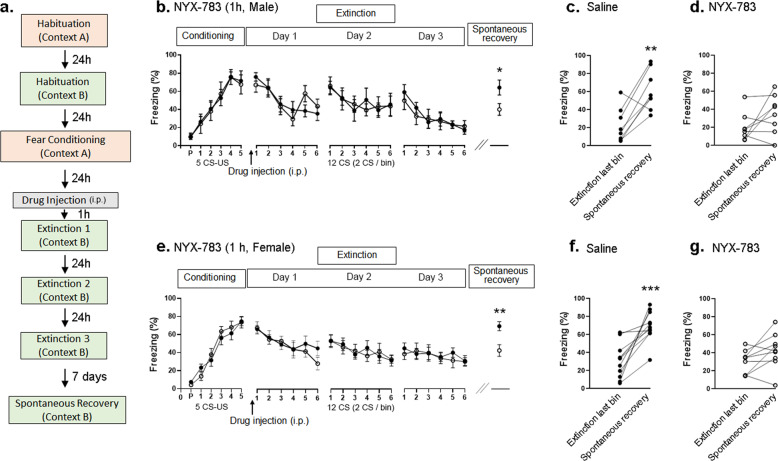Fig. 1. NYX-783 inhibits spontaneous recovery of learned fear in a conventional fear-conditioning model.
a Schematic illustration of the fear-conditioning paradigm. The fear-conditioning protocol (5 CS (84 dB tone for 30 s) US (0.5 mA shock for 1 s) coupled protocol) was modified from a previous report from our laboratory [23]. A 10-min habituation to each chamber (fear conditioning and extinction) was included to ensure the formation and spontaneous recovery of fear memory [41, 42]. Mice were randomly assigned to two groups according to the freezing level during initial fear conditioning. After 24 h, the mice received an intraperitoneal (i.p.) injection of saline or NYX-783. One hour later, the first of three extinction sessions (12 tones with no shocks) was conducted in a context different from that of the original fear-conditioning session. The subsequent extinction sessions were conducted at 24 h intervals, with the three sessions spanning a total of three consecutive days. Seven days later, spontaneous recovery of fear was measured in the same extinction context to test the maintenance of extinction learning. NYX-783 (1 mg/kg; i.p.) treatment significantly inhibited spontaneous recovery after fear conditioning in both male and female mice. b Conditioning of male mice: freezing (% time) for each of the five CS–US pairing trials during fear conditioning in context A, demonstrating the establishment of CS–US pairing. P indicates the baseline freezing during 180 s of habituation in the chamber. Either saline or NYX-783 (1 mg/kg; i.p.) was injected 1 h before the first extinction trial. Day 1: freezing during the first day of extinction in context B. Twelve tones were delivered, and freezing from two tones was averaged (1 bin). Day 2: freezing during the second day of extinction in context B. Day 3: freezing during the third day of extinction in context B. Spontaneous recovery: freezing of a single CS presentation in context B performed 7 days after the last extinction. c Saline: spontaneous recovery. d NYX-783: Spontaneous recovery. n = 7–8 male mice per group. e Percentage of freezing in female mice after fear conditioning, extinction (day 1, day 2, day 3), and spontaneous recovery trials. f Saline: Spontaneous recovery. g NYX-783: spontaneous recovery. n = 9–11 female mice per group. b, e Conditioning and extinction: two-way ANOVA with Sidak’s multiple comparisons post hoc test. Spontaneous recovery: unpaired two-tailed t test (c, d, f, g) paired two-tailed t test *p < 0.05, **p < 0.01, ***p < 0.001, ****p < 0.0001. All the data are expressed as mean ± SEM. P preconditioned stimulus, CS conditioned stimulus, US unconditioned stimulus.

